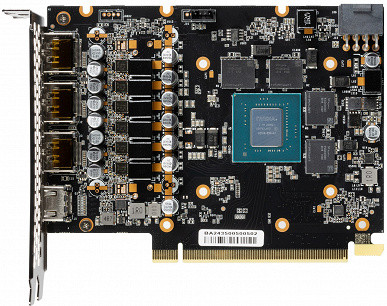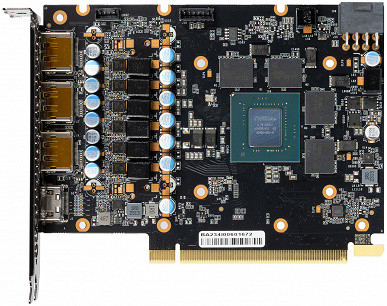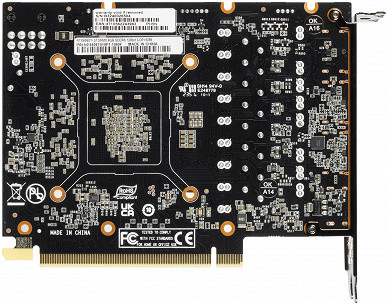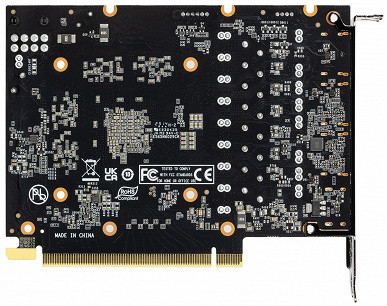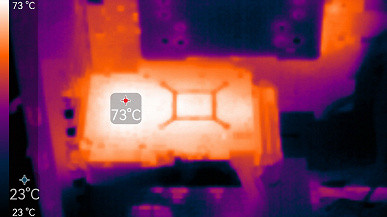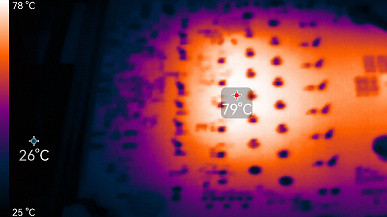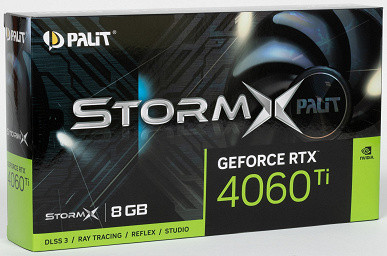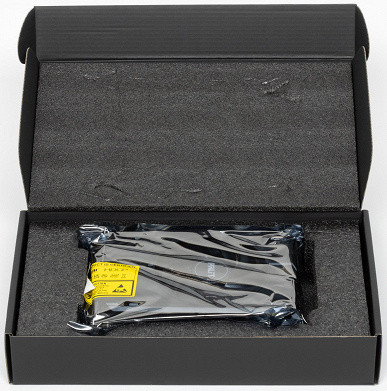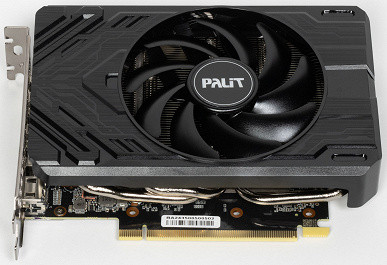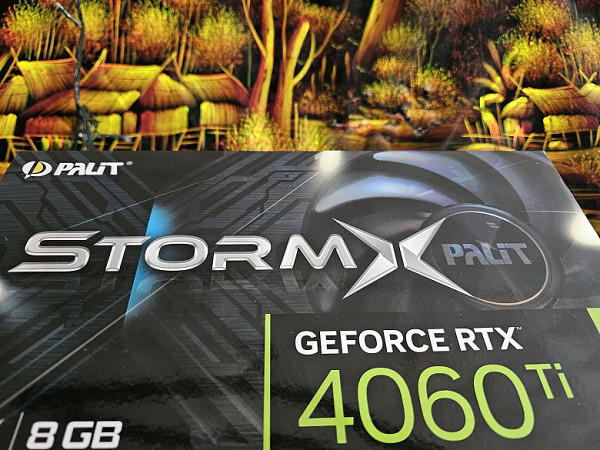
Briefly about the main thing
Not long ago, while studying the mass-produced video cards based on the GeForce RTX 4060, we reviewed the most compact model of Palit StormX, suitable for installation in a Mini-ITX form factor PC.
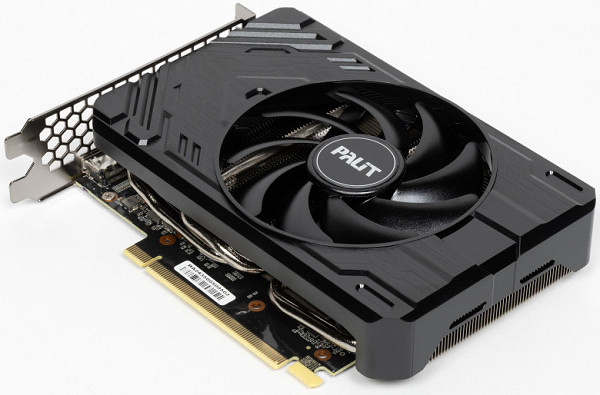
How about a higher-level graphics card based on the GeForce RTX 4060 Ti? Can such a compact cooling system cope with a more powerful GPU that generates more heat? Once again, we have a Palit graphics card from the StormX series under review, which also features compact dimensions suitable for installation in miniature Mini-ITX cases and takes up only 2 slots in the system unit.
Before moving on to detailed tests, we provide a brief overview of the performance of the family to which this accelerator belongs, as well as its main competitors. We conduct performance assessments on a subjective scale with seven levels.
Games without ray tracing (classic rasterization):
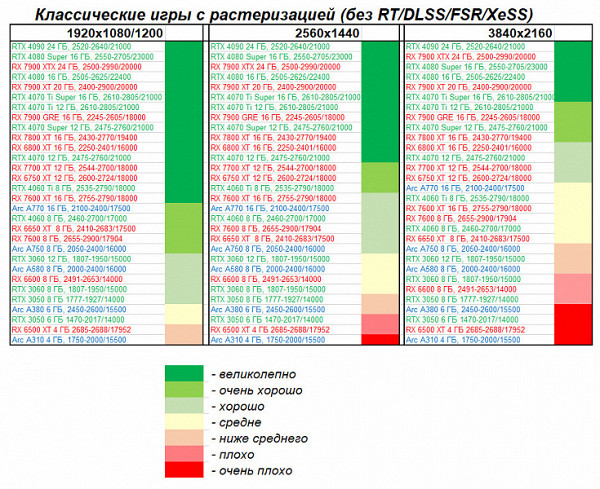
The GeForce RTX 4060 Ti handles games at high graphics settings at 1080p (Full HD) with smooth gameplay, but with ray tracing and DLSS/FSR/XeSS scaling technologies disabled. It also demonstrates good performance at 1440p (2.5K) without having to reduce the graphics quality. The main competitors of the GeForce RTX 4060 Ti are the Radeon RX 6750 XT, Radeon RX 7600 XT and Arc A770.
As for the Palit model, its performance is completely in line with the reference version of the video card.
Games using ray tracing and DLSS/FSR/XeSS:
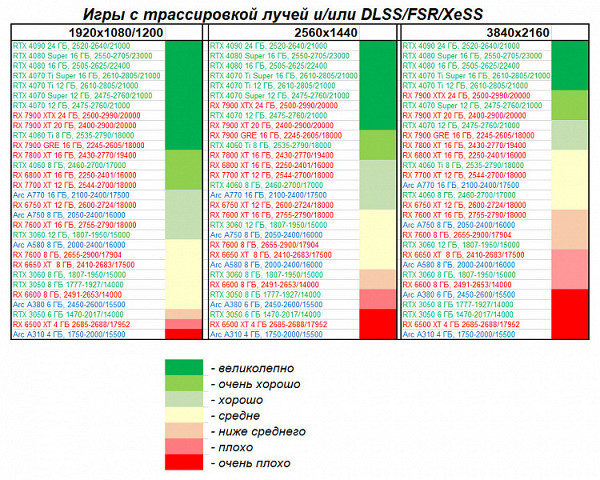
When enabling ray tracing in games, the use of scaling technologies (DLSS/FSR/XeSS) becomes mandatory. If the game supports DLSS 3 with intermediate frame generation, this almost completely compensates for the FPS loss due to the use of RT. Since Radeon graphics cards are more sensitive to performance degradation when ray tracing (even with FSR/XeSS), the GeForce RTX 4060 Ti looks preferable in such games, sometimes outperforming even the Radeon RX 7800 XT.
Thus, in games with ray tracing and DLSS 3 support, a video card based on the GeForce RTX 4060 Ti provides excellent comfort in Full HD (1080p) and decent performance in 1440p (2.5K). However, if DLSS 3 is not supported, you will sometimes need to lower the graphics settings to comfortably play with RT and DLSS/FSR/XeSS at 1440p. If you play with ray tracing without scaling, in some games even in Full HD you will have to lower the graphics settings.
Card characteristics
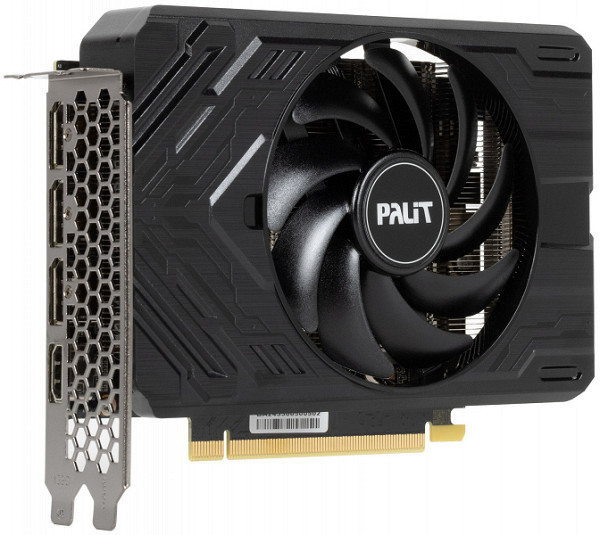
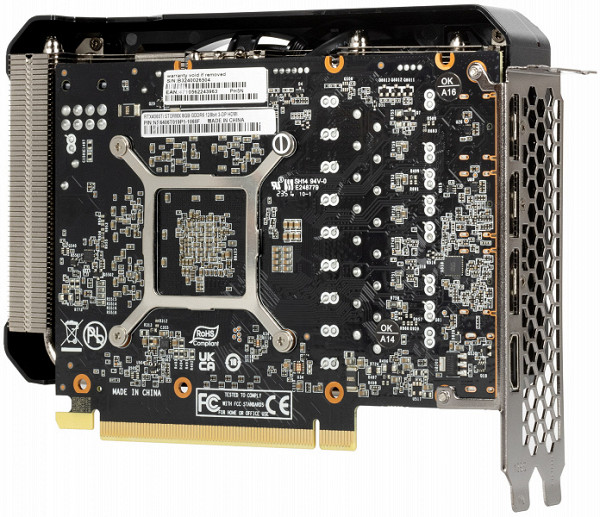
Palit Microsystems (Palit brand) was founded in 1988 in Taiwan. The headquarters are in Taipei, a large logistics center is in Hong Kong, and the European sales office is located in Germany. The company's production facilities are located in China. Palit has been present in the Russian market since 1995, first selling products under the Noname brand, and since 2000 under its own name Palit. In 2005, the company acquired the Gainward brand and the assets of the company of the same name after its bankruptcy, which led to the creation of the Palit Group holding. An office was also opened in Shenzhen, focused on sales in China.
| Palit GeForce RTX 4060 Ti StormX 8GB 128-bit GDDR6 | ||
|---|---|---|
| Parameter | Meaning | Nominal value (reference) |
| GPU | GeForce RTX 4060 Ti (AD106) | |
| Interface | PCI Express x8 4.0 | |
| GPU Operating Frequency (ROPs), MHz | 2535(Boost)—2760(Max) | 2535(Boost)—2790(Max) |
| Memory frequency (physical (effective)), MHz | 2250 (18000) | 2250 (18000) |
| Memory bus width, bit | 128 | |
| Number of computing units in a GPU | 34 | |
| Number of operations (ALU/CUDA) in a block | 128 | |
| Total number of ALU/CUDA blocks | 4352 | |
| Number of texture units (BLF/TLF/ANIS) | 136 | |
| Number of rasterization units (ROP) | 48 | |
| Number of Ray Tracing Blocks | 34 | |
| Number of tensor blocks | 136 | |
| Dimensions, mm | 170×124×39 | 250×110×40 |
| The number of slots in the system unit occupied by the video card | 2 | 2 |
| Color of PCB | black | black |
| Peak power consumption in 3D, W | 157 | 160 |
| Power consumption in 2D mode, W | 30 | 30 |
| Power consumption in sleep mode, W | 11 | 11 |
| Noise level in 3D (maximum load), dBA | 36.3 | 35.0 |
| Noise level in 2D (video viewing), dBA | 18.0 | 18.0 |
| Noise level in 2D (idle), dBA | 18.0 | 18.0 |
| Video outputs | 1×HDMI 2.1, 3×DisplayPort 1.4a | 1×HDMI 2.1, 3×DisplayPort 1.4a |
| Support for multiprocessor operation | No | |
| Maximum number of receivers/monitors for simultaneous image output | 4 | 4 |
| Power: 8-pin connectors | 1 | 0 |
| Power: 6-pin connectors | 0 | 0 |
| Power: 16-pin connectors | 0 | 1 |
| Weight of the card with the delivery set (gross), kg | 0.7 | 1.3 |
| Net weight of the card, kg | 0.46 | 0.9 |
| Max Resolution/Frequency, DisplayPort | 3840×2160@144 Hz, 7680×4320@60 Hz | |
| Maximum Resolution/Frequency, HDMI | 3840×2160@144 Hz, 7680×4320@60 Hz |
Memory
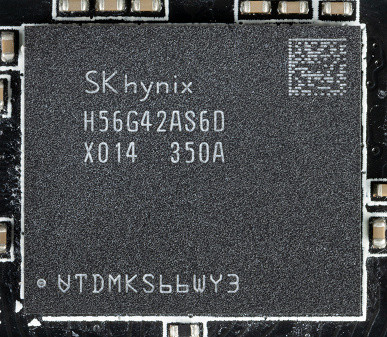
The graphics card is equipped with 8 GB of GDDR6 SDRAM memory, located in 4 chips of 16 Gbit on the front side of the printed circuit board (PCB). The memory modules are manufactured by SK hynix (H56G42AS6DX014) and are designed to operate at a nominal frequency of 2250 MHz (effective frequency 18000 MHz).
Features of the card and comparison with Palit GeForce RTX 4060 Ti Dual (8GB)
We compare this card with another Palit model to make sure the PCBs are almost identical.
The core is labeled AD106-350, with a release date of week 5, 2024.
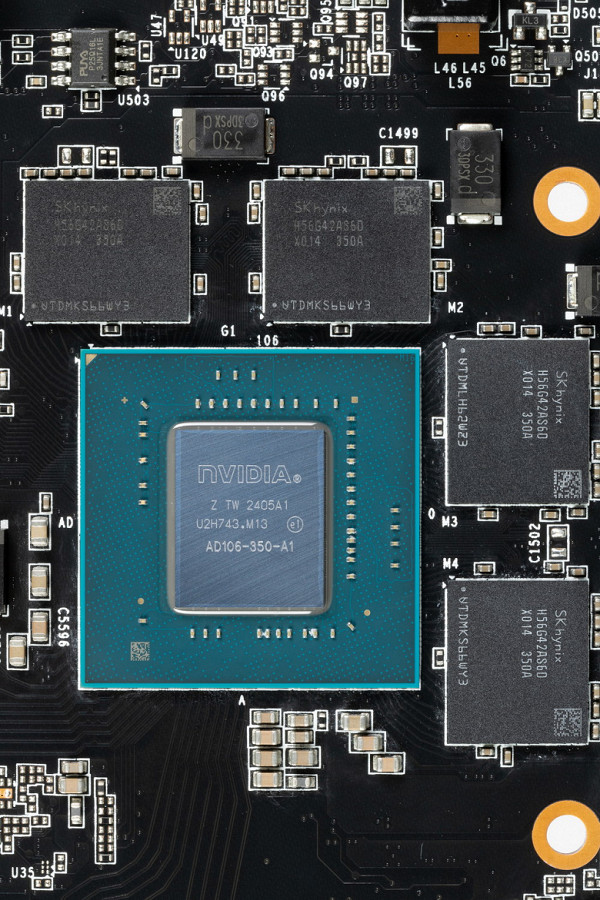
The total number of power phases in the Palit card is 7 (6+1).
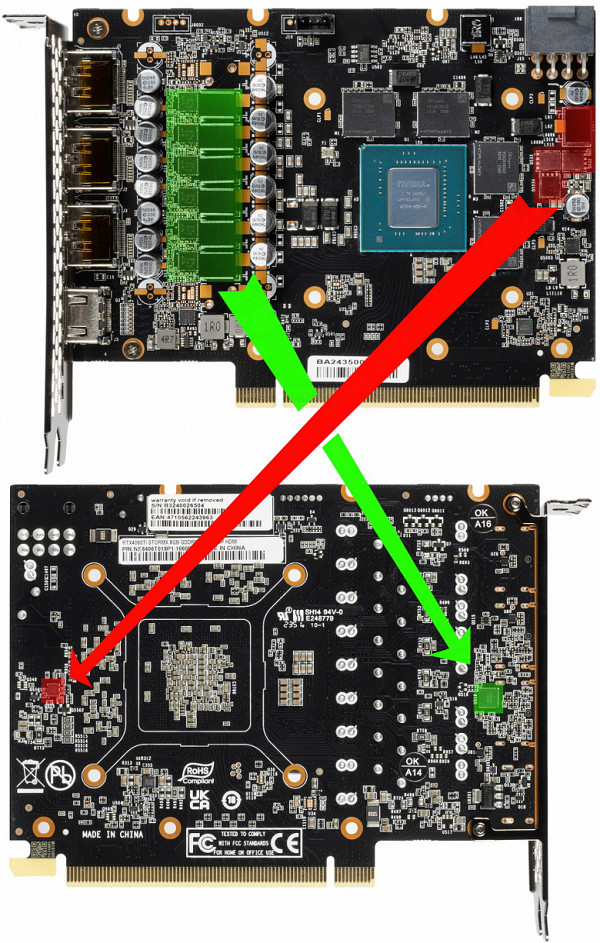
The core power supply is highlighted in green, and the memory is highlighted in red. All PWM controllers are located on the back side of the printed circuit board (PCB).
The uP9512R controller from uPI Semiconductor is responsible for managing the 6 phases of the core power supply, supporting up to 12 phases.
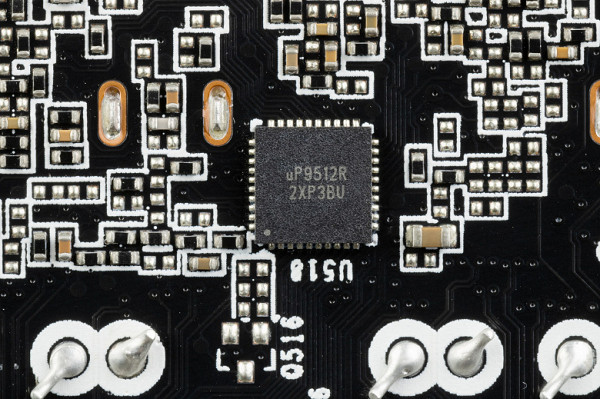
The power supply for the memory chips is controlled by the 7212 controller (On Semiconductor), which has OEM markings.
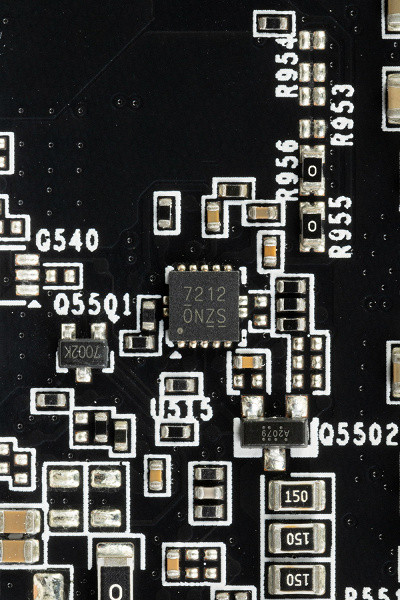
The core power converter uses DrMOS transistor assemblies — in this case SiC653A (Vishay), each rated for a maximum of 50 A.
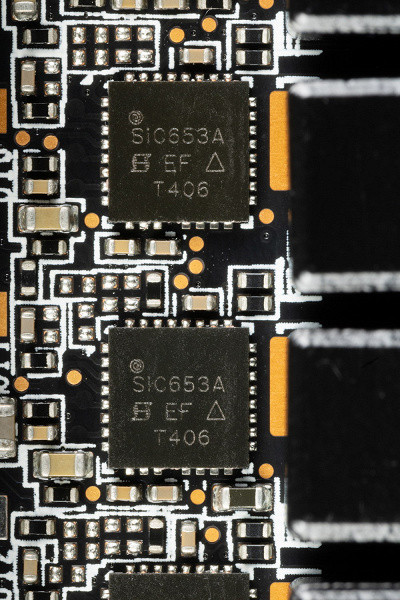
The single-phase power supply circuit for the memory chips uses SM4377/4503 (Sinopower) field-effect MOSFETs, also designed for a maximum current of 50 A.
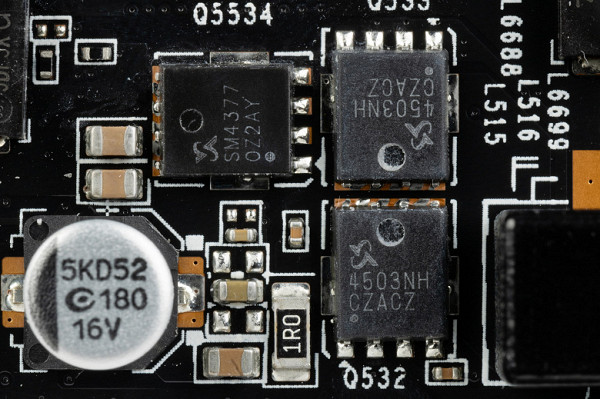
On the front side of the board there is a uS5650Q controller (uPI Semi), which is responsible for monitoring the card (tracking voltages and temperatures).
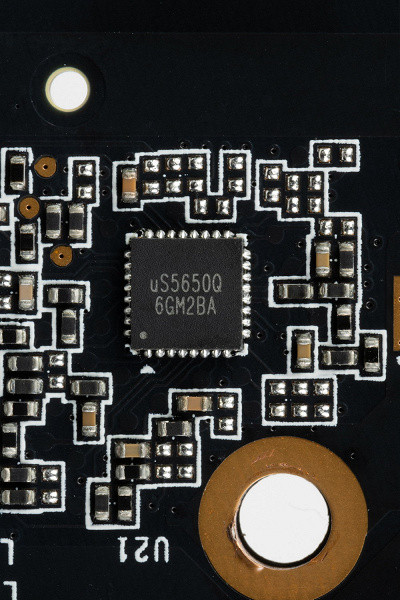
The memory frequencies and core boost values of the card correspond to the reference values. The maximum core frequencies are slightly lower than the reference card due to the strict power consumption limit, but this has practically no effect on performance. Overall, the Palit card demonstrates a level comparable to the reference model.
In tests, the Palit power consumption reached 157 W.
It is impossible to raise the power consumption limit of this card, so manual overclocking was not performed.
The card is powered via a standard 8-pin PCIe 2.0 connector.

The dimensions of this card are small, the thickness is about 4 cm, so the video card takes up 2 slots in the system unit.

The card operation is controlled using the proprietary Palit utility.
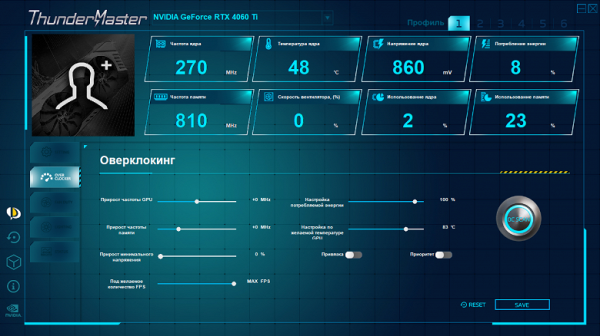
Control panel for operating frequencies, limits and voltage
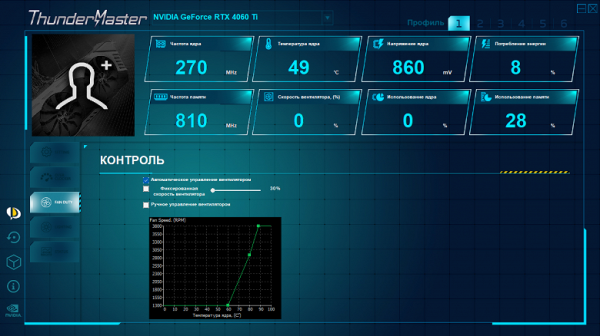
Fan control panel
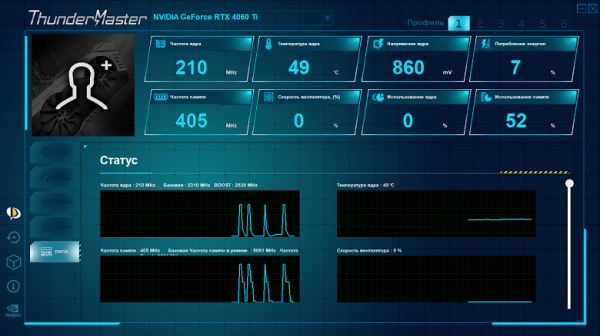
Dashboard
Heating and cooling
The cooling system is based on a compact nickel-plated radiator with heat pipes. Compared to the GeForce RTX 4060-based model from the same series, which is equipped with a simple aluminum radiator without heat pipes, this cooler is much more efficient and powerful.
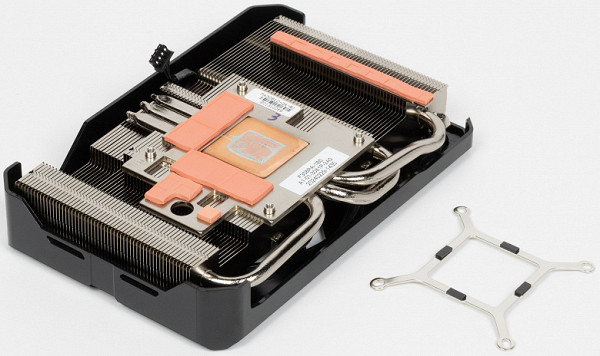
The heat pipes are soldered to a large plate, which acts as a heat sink for the memory chips via a thermal interface. The same plate cools the components of the memory power converters (VRM). A separate small heat sink is provided for the VRM components of the core, mounted on the same radiator.
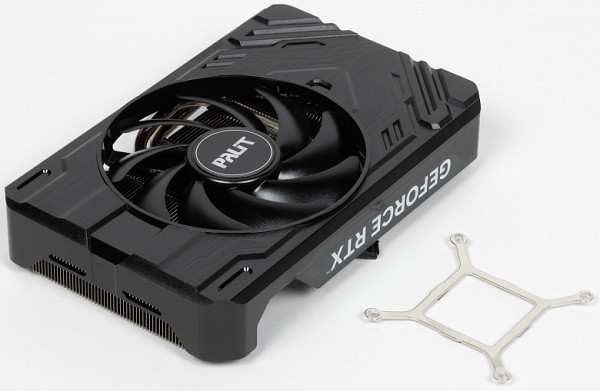
The card has no backplate.
A casing with a 120 mm fan is installed on top of the radiator.
The fan stops at low load when the GPU temperature drops below 50 degrees. When the PC is turned on, the fan starts, but after loading the video driver and checking the temperature, it turns off.
Temperature monitoring:
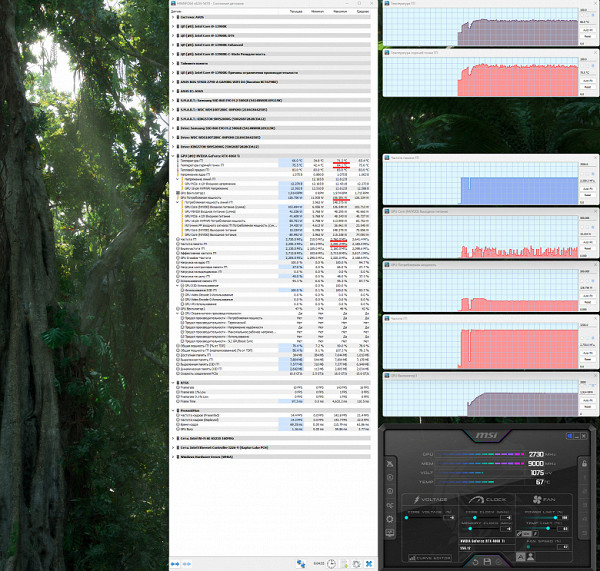
After 2 hours of testing under load, the maximum core temperature did not exceed 71 degrees, and the hot spot temperature reached 84 °C, which is an acceptable indicator for video cards of this level.
The card's power consumption reached 157 W.
The maximum heating was observed in the central part of the PCB.
Noise
The noise measurement method involves using a soundproof room with minimal reverberation. The system unit in which the video card noise testing is carried out has no fans and is not a source of mechanical noise. The background level is 18 dBA — this is the noise in the room and the noise meter. Measurements are taken at a distance of 50 cm from the video card at the level of the cooling system.
Measurement modes:
- 2D idle mode: an Internet browser with the iXBT.com website, a Microsoft Word window, and several Internet communicators are open.
- 2D mode with movie viewing: SmoothVideo Project (SVP) is used with hardware decoding and insertion of intermediate frames.
- 3D mode with maximum load: the FurMark test is used.
Noise level assessment:
- Less than 20 dBA: relatively silent
- 20–25 dBA: very quiet
- 25–30 dBA: quiet
- 30–35 dBA: clearly audible
- 35–40 dBA: loud, but bearable
- Above 40 dBA: very loud
In idle mode in 2D, the temperature did not exceed 40 °C, the fan did not work, the noise level was 18 dBA.
When watching a movie with hardware decoding, the situation remained the same.
In maximum load mode in 3D, the temperature reached 71/84 °C (core/hot spot). The fan accelerated to 1947 rpm, the noise level increased to 36 dBA — this is loud, but still bearable. Considering that the temperature of the components remains within the normal range during normal operation of the cooling system, we recommend adjusting the cooler in the proprietary utility, reducing the speed to a safe level for quieter operation.
Below is a noise spectrogram.
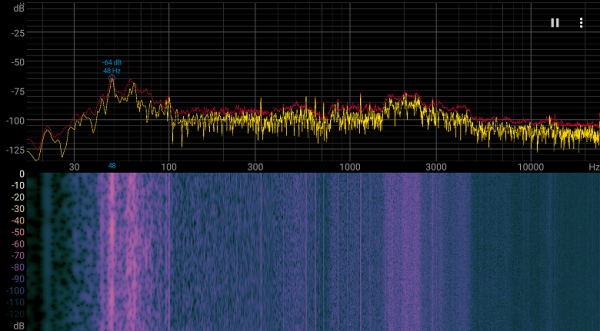
Remember that some of the heat generated by the video card remains inside the system unit, so it is recommended to use a case with good ventilation. Unfortunately, many compact solutions cannot boast such characteristics.
Backlight
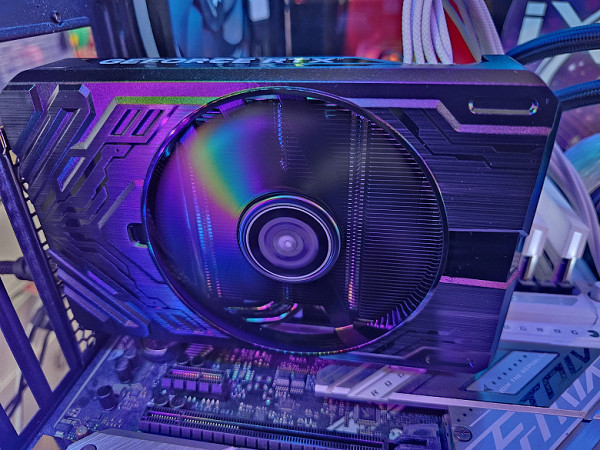
The map has no backlight.
Delivery set and packaging
The package contains nothing but the card itself.
Conclusions
The Palit GeForce RTX 4060 Ti StormX (8GB) is one of the most compact modern graphics cards based on the latest generation of Nvidia's junior GPU. Its dimensions are 17×12.5×4 cm, and it takes up 2 slots in the system unit, making it suitable for Mini-ITX cases. Unlike the Palit GeForce RTX 4060 StormX, this card's cooling system is quite effective, although it can be noisy at default settings. Maximum power consumption reaches 157 W, and the card is equipped with a standard 8-pin power connector. It has no backlighting. The video outputs are presented in a standard set: three DP 1.4a and one HDMI 2.1.
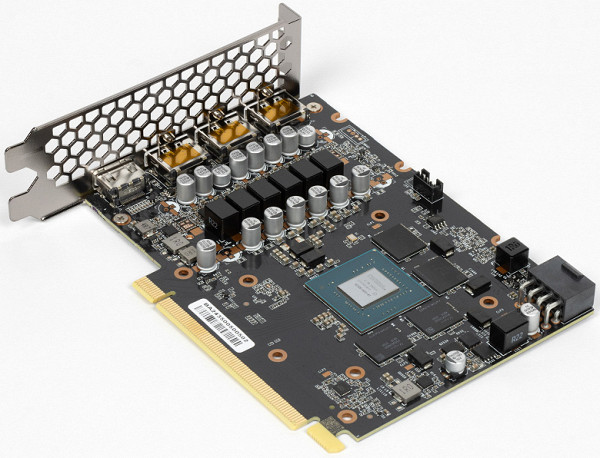
The manufacturer provides a 3-year warranty for this video card.
Recall that the GeForce RTX 4060 Ti is ideal for gaming at 1080p with maximum graphics settings without ray tracing and provides a comfortable game with RT support and DLSS / FSR / XeSS technologies at the same resolution. These cards are also capable of providing an acceptable level of comfort in games without RT at a resolution of 1440p.
All GeForce RTX 40 generation video cards support the HDMI 2.1 standard, which allows you to output 4K images at 120 FPS or 8K resolution using a single cable. They also support hardware decoding of video data in AV1 format, RTX IO technology for fast transfer and decompression of data from drives directly to the GPU, as well as Reflex latency reduction technology.

